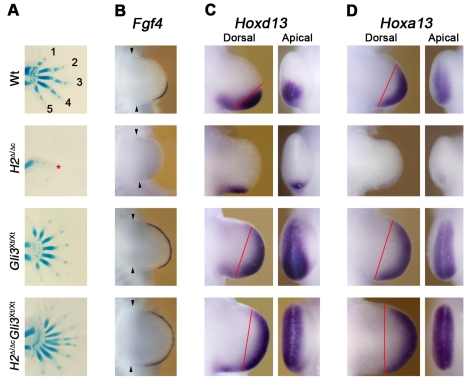Figure 7. Apolar expression of Fgf4, Hoxd13, and Hoxa13 in the autopod primordia of H2 Δ/Δc Gli3 Xt/Xt forelimb buds.
(A) Skeletal preparations of the autopod (E14.5) of H2 Δ/Δc Gli3 Xt/Xt, H2 Δ/Δc, and Gli3 Xt/Xt single mutant and wild-type forelimbs. Digit identities are indicated by numbers 1 (thumb, anterior) to 5 (little finger, posterior). Black asterisks indicate digits with undetermined identities; red asterisk indicates the rudimentary digit formed in H2 Δ/Δc forelimbs. (B) Fgf4 expression in the AER of wild-type and mutant limb buds at E10.5 (36 somites). Fgf4 is expressed at very low levels in the posterior of in H2 Δ/Δc limb buds, but expands throughout the AER of H2 Δ/Δc Gli3 Xt/Xt forelimb buds. Arrowheads indicate the anterior and posterior margins of limb buds. (C) Hoxd13 expression at E10.75 (40 somites). The late Hoxd13 expression domain in H2 Δ/Δc Gli3 Xt/Xt limb buds appears symmetrical in contrast to e.g. Gli3 deficient limb buds (expression borders are indicated by red lines). This is best seen by comparing apical views. (D) Hoxa13 expression at E10.75 (41 somites). The Hoxa13 expression domain appears also symmetrical in H2 Δ/Δc Gli3 Xt/Xt limb buds, while some asymmetry is retained in Gli3 deficient limb buds (red lines in dorsal views; best seen by comparing the apical views).

